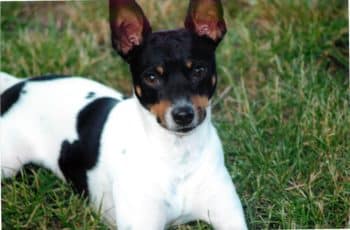If your fluffy Havanese guards the sofa like a Secret Service agent monitoring the White House, then you understand how protective dogs can be. Throughout history, dogs have stood by our side as best friends and loyal protectors.
In modern times, we utilize and train protective dogs to assist with police work. In this article we’ll cover the fascinating history of police dogs, commonly referred to as K9 (homophone of canine).
K-9s are carefully selected and well-trained. Police Departments train their K-9 units following standards set by a Police Chief’s Council, to maximize efficiency and safety.


A Look into the History of Police Dogs
The training that a K9 goes through stems from Belgium, in the city of Ghent, back in 1899. The first breeds trained as K9s Were the Belgian Malinois and Bloodhounds. In the US, the NYPD was the first police department to train dogs for police duty, following the Ghent model.
The main purpose of the NYPD dogs was to patrol New York City streets during late night hours. Dogs were trained to be aggressive to anyone without an NYPD uniform. There were many complaints by New Yorkers who enjoyed walking at night. In 1918, the program became obsolete with the arrival of vehicle patrols.
The Baltimore Police Department was the first PD (Police Department) in America to successfully institute a modern canine corps in 1954.
Why Dogs Are Perfect Police Officers
“High-energy, goal-oriented, and focused” would be the LinkedIn profile description of a K9 dog. Though certain breeds may be better at different tasks, dogs are outstanding officers because of their unrivaled sense of smell, cognitive abilities, and highly developed human understanding capacity.
A Dog’s Inquisitive Sense of Smell
Dogs gather information about their surroundings through their sense of smell. Their detection range is wider than that of many sophisticated laboratory instruments. This unique ability makes them perfect for patrolling airports, conducting search and rescue missions, and being key figures in crime investigations.


While sniffing, the air dogs inhale through their nostrils is separated into two pathways; one goes straight to the olfactory region while the other goes down into the pharynx and into the lungs. In the olfactory region, odor molecules are deposited and accumulate before the air is exhaled. During exhalation, it passes by the olfactory region again.
A dog’s smelling apparatus does a thorough scan of odors. They store this information in their memory, collecting a large library of scents and whiffs. The scents they detect are extremely specific. From substances and chemicals to changes in emotions and even cell modifications, a dog’s nostril will pick up on it!
A Dog’s Sharp Cognition
Dogs in the police force must focus and respond to their handler’s commands. They have a keen ability to learn cues and distinguish varying situations. Research shows that dogs will recognize human gestures even when they’re puppies. They can also produce gestures to humans, enhancing their communication skills.
The Strong Bond between Handler and K9
A dog’s ability to bond with their handler is very important during training and on the job. K9s must obey rigorously and trust their handler fully.
When you look at your dog, and they look back on mutual understanding, you’re witnessing an essential ability that K9 dogs have: building a strong bond with their handler.
K9s Dogs On Duty to Serve and Protect
Dogs serve in the police force for 6 to 9 years. While working on the force, dogs are protected by federal law. This means that intentionally harming or killing a police dog on duty is a criminal offense.
The breeds most commonly trained as K9 units are German Shepherds, Belgian Malinois, Basset Hounds, Bloodhounds, and Labrador Retrievers. However, a pure breed pedigree is not required.
What matters most is the dog’s temperament, ability to focus and have a high reward drive. To move forward to K9 academy, the dog must first pass basic obedience training. That’s where the dog will acquire its main skill set and build a strong bond with its handler.


Patrol & Detection
So now that we’ve learned about the history of police dogs, lets take a look at modern day K9s and what training they go through. Modern day K9s are divided into two groups: patrol and detection.
Dogs can be “single purpose” or “dual purpose”. Single-purpose dogs are trained to perform only one task. Dual-purpose dogs combine duties into one K9. These may be patrol dogs or, in some cases, narcotics detection dogs working in public events.
Patrol Dogs
Patrol dogs are authoritative figures, well-trained at safely apprehending a suspect in various scenarios. Some of these scenarios might include altercations, clearing a building, or trailing a dangerous suspect. They’re trained to target and grip non-lethal locations such as the forearm, upper arm, or legs.
One benefit of working with a patrol dog is that it will withdraw upon request. This makes it a safer alternative to tasers or bullets since a dog can be recalled before biting. Patrol K9s also help the police force with their amazing speed. An energetic K9 will locate a dangerous suspect who has escaped or barricaded themselves in a home or building and alert their handler at the door once they’ve located the criminal.
See also




Detection Dogs
Detection dogs, sometimes called “sniffer dogs,” are used to locate specific substances such as narcotics and human remains. They’re single-purpose dogs that are only trained to identify one substance.
Narcotic detection dogs
Narcotic dog handlers train their pup to locate any of the following substances:
- Marijuana
- Cocaine
- Heroin
- Methamphetamine
- MDMA
- PCP
- LSD
Explosive Detection Dogs (EDD)
Explosives Detection Dogs (EDDs) are dogs trained to detect explosives and the chemicals used to create them. They’re used in military operations, local police forces at crowded events, and airport customs security personnel.
Of all detection dogs, EDDS have the most rigorous behavioral standards, with a high rate of disqualification from training. They must work in crowded public spaces and some near people, so they must be sociable, friendly, focused, and determined.
Types of Explosive Detection Dogs (EDD)
- Standard EDD: A dog that searches areas in the immediate direction of their handler, often in the lead, but not exclusively.
- Person-Borne Improvised Explosive Device (PBIED): A dog who screens individuals in search of explosive devices, usually passengers in an airport.
- Vapor Wake Canines: A new type of detection dog developed by the Auburn University’s Canine Performances Sciences Program). They’re trained to spot explosives on the move. They can recognize molecules left in the air by a moving target.
- Specialized Search Dogs: A dog that works off-lead and down-range in an area in search of a specific target. These include land-mine detection dogs and are used primarily by the military.


Rescue and Human Remains Detection Dogs (HRDDs)
Human Remains Detection Dogs (HRDDs), or “cadaver dogs,” are trained to locate the scent of human decomposition. They play a deciding factor in homicide crime scenes and are an invaluable resource during natural and manmade disasters. They have spot-on precision and can locate anything from human remains under the floor to bodily remains located underwater in rivers, lakes, and oceans.
Rescue dogs will locate a missing individual who is in danger. They’re a huge asset to the police rescue force. The speed and agility of an athletic working dog can cover much more ground than a human. They’re trained to work closely with rescue teams covering individuals missing in fields, cities, mountains, caves, disaster units, water areas and combat zones. :
Protecting Our Communities
The intriguing history of police dogs is not only fascinating for dog lovers but for citizens who believe in the safety the police force can provide. Police dogs are given the essential duty to protect our communities and in many cases save our lives. They’re trustworthy and faithful animals that will take a bullet for their partner. This is just another layer to the fascinating complexities that make dogs amazing.


